PCB Repair Logs Tetris Bootleg: Difference between revisions
Created page with "==Tetris (Bootleg)== <p><table class="infobox vevent" style="width:22em;" cellspacing="5"> <caption class="summary" style=""><b>Tetris (Bootleg)</b></caption> <tr class="> <td..." |
mNo edit summary |
||
| Line 18: | Line 18: | ||
'''Forum Thread:''' [http://www.aussiearcade.com.au/showthread.php/30861-Tetris-Bootleg-Repairlog Tetris (Bootleg) PCB Repair]<br> | '''Forum Thread:''' [http://www.aussiearcade.com.au/showthread.php/30861-Tetris-Bootleg-Repairlog Tetris (Bootleg) PCB Repair]<br> | ||
<br> | <br> | ||
Took pity on an old Tetris bootleg board that horseyboy69 was trying to get shot of, think it was listed as having corrupt graphics. | |||
Fired it up and that was pretty accurate | |||
<br> | |||
<br> | |||
[[File:Pcb repair tetris bootleg 1.jpg]] | |||
<br> | |||
<br> | |||
[[File:Pcb repair tetris bootleg 2.jpg]] | |||
<br> | |||
<br> | |||
[[File:Pcb repair tetris bootleg 3.jpg]] | |||
<br> | |||
<br> | |||
[[File:Pcb repair tetris bootleg 4.jpg]] | |||
<br> | |||
<br> | |||
Had already spotted the likely candidate tho, a big scratch on the otherwise mint solderside of the board. | |||
<br> | |||
<br> | |||
[[File:Pcb repair tetris bootleg 5.jpg]] | |||
<br> | |||
<br> | |||
As usual the tracks that looked the worst were actually OK and the ones that looked like they had survived were totally cut tho, only 3 in fact. So I soldered in short lengths of hookup wire to bridge the cut tracks, also re soldered a very dry joint on one of the main smoothing capacitors, the solder had never wetted the leg of the cap and it was totally loose on that leg. | |||
<br> | |||
<br> | |||
[[File:Pcb repair tetris bootleg 6.jpg]] | |||
<br> | |||
<br> | |||
Plugged it all back in and fired it up... | |||
<br> | |||
<br> | |||
[[File:Pcb repair tetris bootleg 7.jpg]] | |||
<br> | |||
<br> | |||
[[File:Pcb repair tetris bootleg 8.jpg]] | |||
<br> | |||
<br> | |||
[[File:Pcb repair tetris bootleg 9.jpg]] | |||
<br> | |||
<br> | |||
..fixed. | |||
Another nice easy one. | |||
UPDATED | |||
Well it didn't last for long turned it on for a quick blast tonight and was greeted by loud beeping, blarking and angry buzzing noises. The game runs but the sound is all shot, was working fine last night. | |||
The most worrying part was that the sound is generated by 4 TISN76489 chips in the bottom left by the amp, these are probably OK as its not likely to lose all 4 in one go... | |||
<br> | |||
<br> | |||
[[File:Pcb repair tetris bootleg 10.jpg]] | |||
<br> | |||
<br> | |||
...but their WR, OE and all data lines were very unstable on the scope, lots of inactivity followed by bursts of crap, these track back to a 40 pin DIP and a 16 pin DIP, these lines are mostly silent with bursts of crap that coincides with the blarking noises. These chips are one of about half a dozen chips which have had the markings sanded off.. | |||
<br> | |||
<br> | |||
[[File:Pcb repair tetris bootleg 11.jpg]] | |||
<br> | |||
<br> | |||
...ironic really that the bootleggers didn't want their bootleg design getting bootlegged by other bootleggers. Not very useful now tho! | |||
The 40 pin chip handled the datalines to the sound generators so I started there, I quickly ruled out it being a Z80 (no clock on pin 6, volts and ground in the wrong place), or a 6502 or 6509 for similar reasons. So I powered the board down and got the continuity tester on it, power and ground were where they should be, the D0->D7 pins on the 76489 sound generators connect back to pins 27-34, and there was a crystal slung between pins 2 and 3. Googled around looking for CPU/MPUs from the right era in 40 pin DIP format that matched what I could work out and found the 8042, a CPU that never really took the CPU world by storm (other than acting as a PS2 keyboard interface controller in 386 PCs). Pins 27-34 happen to be the start of the IO bank P pins on an 8042 IF the chip is in external access mode, in which case pin 7 should be tied to ground - which it was!!! Woohoo mystery CPU identified | |||
Powering it back up again and seeing what was what now I have the pinout its instantly clear that the clock signal was weak and seemed to come and go. The crystal was joining pins 2 and 3 without anywhere else to go wrong really, except that one leg of the crystal can had rusted right through, as soon as I moved the can the leg gave up totally and snapped off. | |||
<br> | |||
<br> | |||
[[File:Pcb repair tetris bootleg 12.jpg]] | |||
<br> | |||
<br> | |||
If I hold the leg hard against where it broke off all the crazy noises stop, and if I manage to hold it still long enough to reboot the board, coin it up and start the game I get all the sound effects and music back. | |||
Just need to find me a 10.7Mhz crystal now - its a funny value for arcade land, but the silk screening on the board confirms it should be a 10.7 so will have to track one down | |||
<br> | |||
<br>[[PCB_Repair_Index|Back to PCB Repair Index]] | |||
Latest revision as of 08:08, 24 August 2012
Tetris (Bootleg)
 |
|
| PCB Image | Reserved |
|---|---|
| Pin Out | Reserved |
Repairer: Womble
Forum Thread: Tetris (Bootleg) PCB Repair
Took pity on an old Tetris bootleg board that horseyboy69 was trying to get shot of, think it was listed as having corrupt graphics.
Fired it up and that was pretty accurate
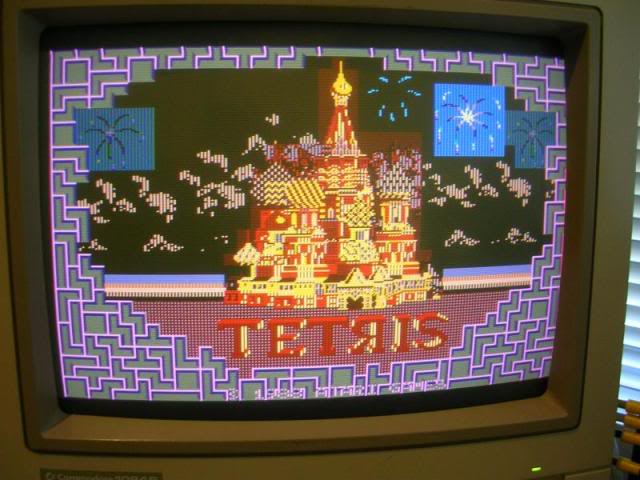
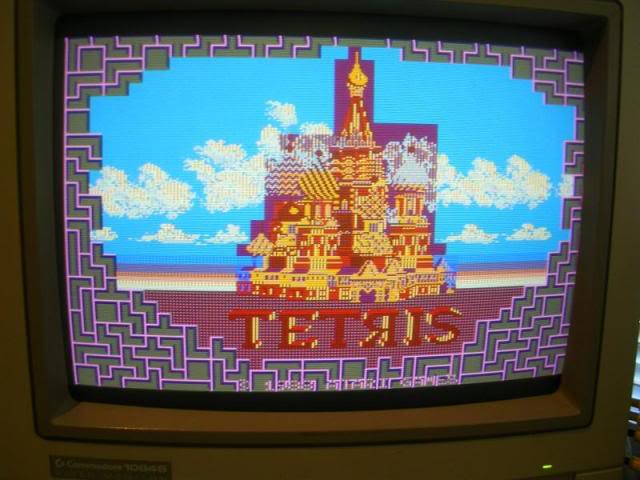
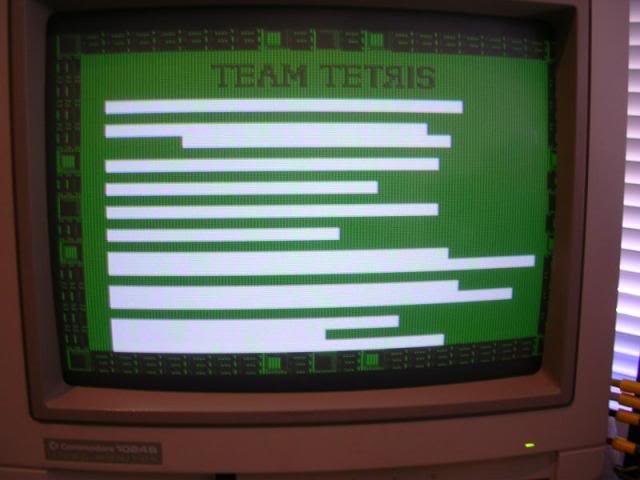
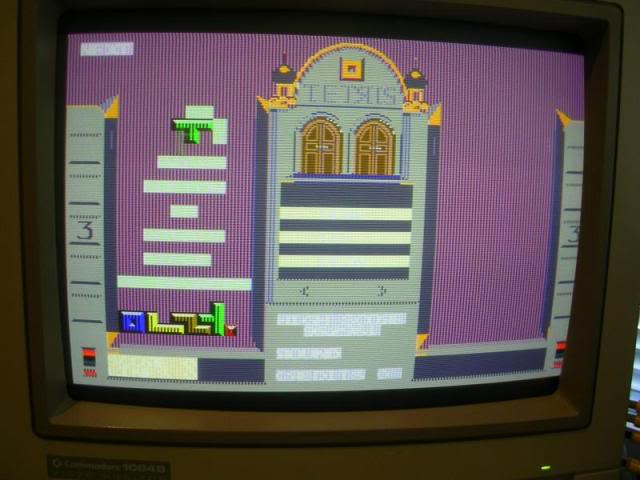
Had already spotted the likely candidate tho, a big scratch on the otherwise mint solderside of the board.
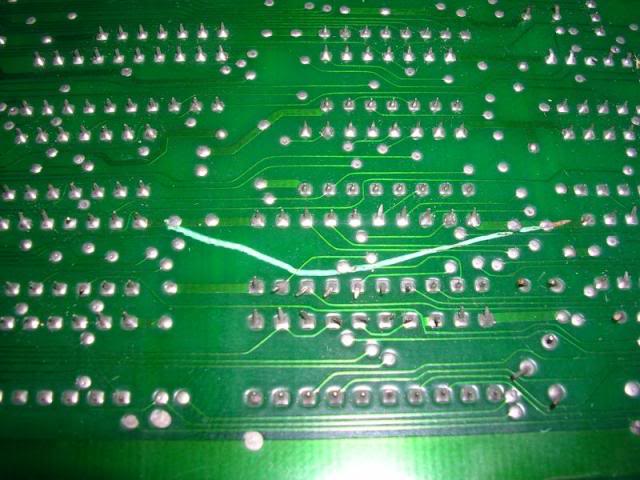
As usual the tracks that looked the worst were actually OK and the ones that looked like they had survived were totally cut tho, only 3 in fact. So I soldered in short lengths of hookup wire to bridge the cut tracks, also re soldered a very dry joint on one of the main smoothing capacitors, the solder had never wetted the leg of the cap and it was totally loose on that leg.
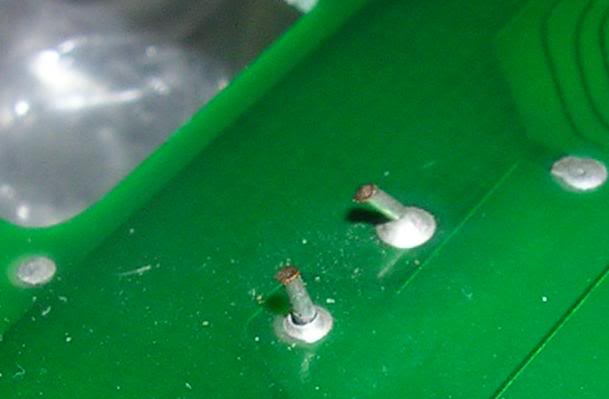
Plugged it all back in and fired it up...
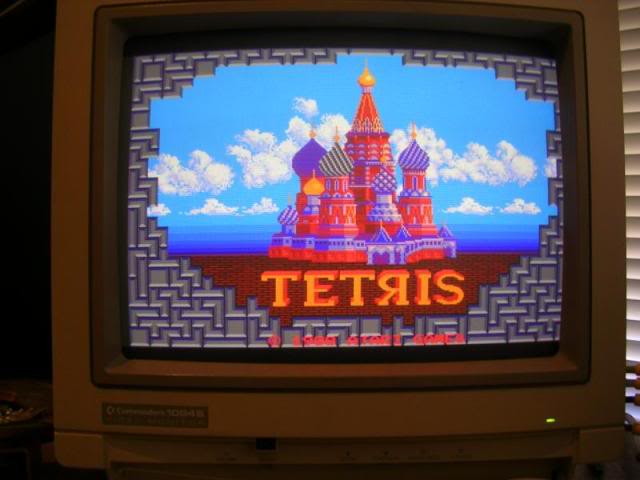
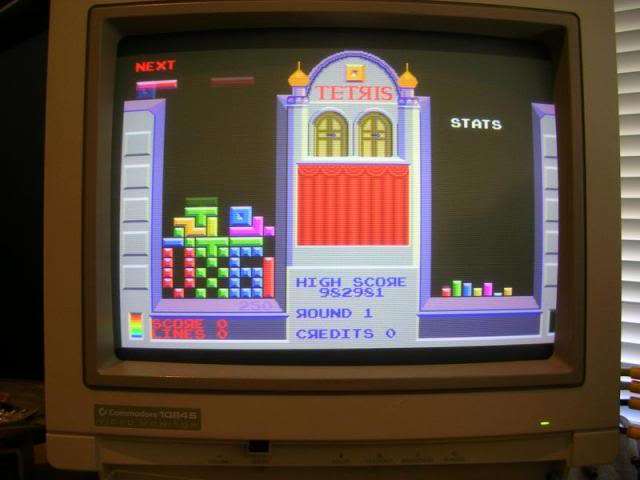
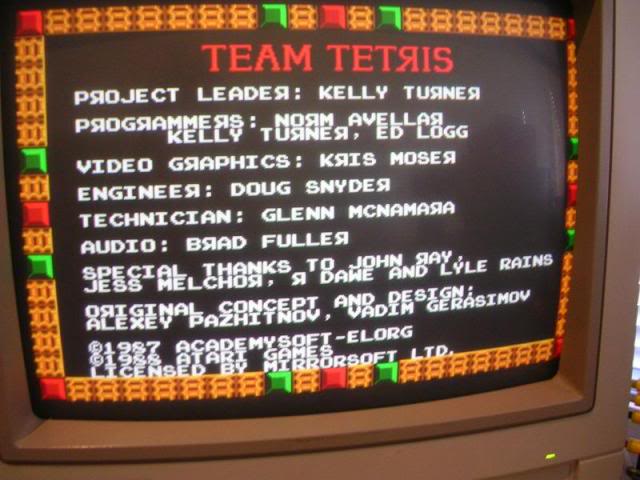
..fixed.
Another nice easy one.
UPDATED
Well it didn't last for long turned it on for a quick blast tonight and was greeted by loud beeping, blarking and angry buzzing noises. The game runs but the sound is all shot, was working fine last night.
The most worrying part was that the sound is generated by 4 TISN76489 chips in the bottom left by the amp, these are probably OK as its not likely to lose all 4 in one go...
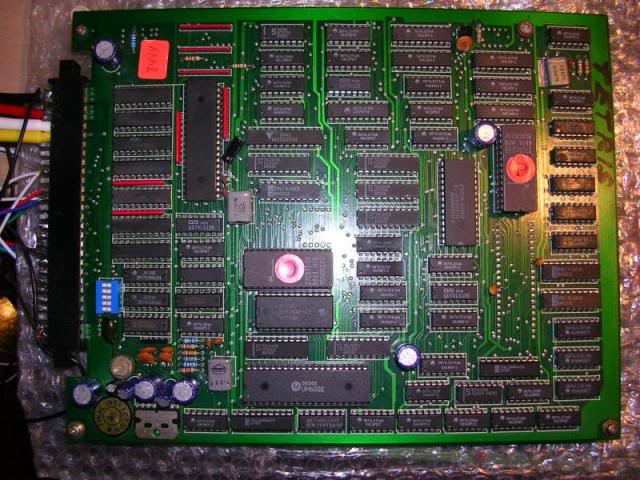
...but their WR, OE and all data lines were very unstable on the scope, lots of inactivity followed by bursts of crap, these track back to a 40 pin DIP and a 16 pin DIP, these lines are mostly silent with bursts of crap that coincides with the blarking noises. These chips are one of about half a dozen chips which have had the markings sanded off..
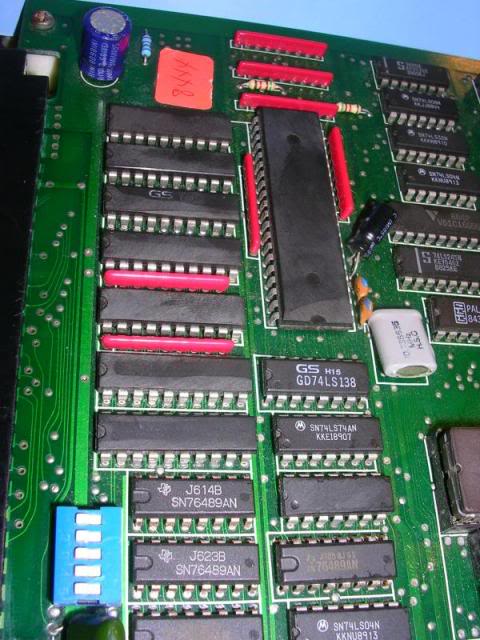
...ironic really that the bootleggers didn't want their bootleg design getting bootlegged by other bootleggers. Not very useful now tho!
The 40 pin chip handled the datalines to the sound generators so I started there, I quickly ruled out it being a Z80 (no clock on pin 6, volts and ground in the wrong place), or a 6502 or 6509 for similar reasons. So I powered the board down and got the continuity tester on it, power and ground were where they should be, the D0->D7 pins on the 76489 sound generators connect back to pins 27-34, and there was a crystal slung between pins 2 and 3. Googled around looking for CPU/MPUs from the right era in 40 pin DIP format that matched what I could work out and found the 8042, a CPU that never really took the CPU world by storm (other than acting as a PS2 keyboard interface controller in 386 PCs). Pins 27-34 happen to be the start of the IO bank P pins on an 8042 IF the chip is in external access mode, in which case pin 7 should be tied to ground - which it was!!! Woohoo mystery CPU identified
Powering it back up again and seeing what was what now I have the pinout its instantly clear that the clock signal was weak and seemed to come and go. The crystal was joining pins 2 and 3 without anywhere else to go wrong really, except that one leg of the crystal can had rusted right through, as soon as I moved the can the leg gave up totally and snapped off.
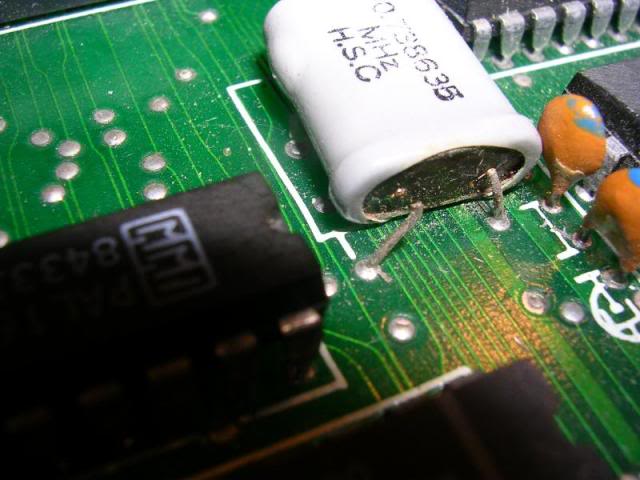
If I hold the leg hard against where it broke off all the crazy noises stop, and if I manage to hold it still long enough to reboot the board, coin it up and start the game I get all the sound effects and music back.
Just need to find me a 10.7Mhz crystal now - its a funny value for arcade land, but the silk screening on the board confirms it should be a 10.7 so will have to track one down